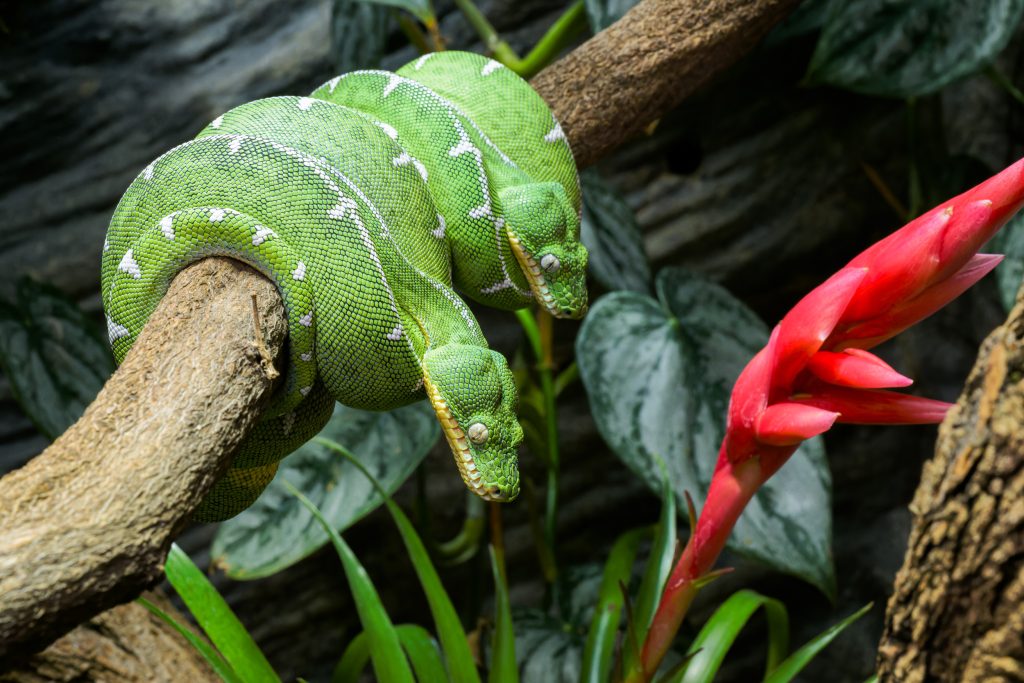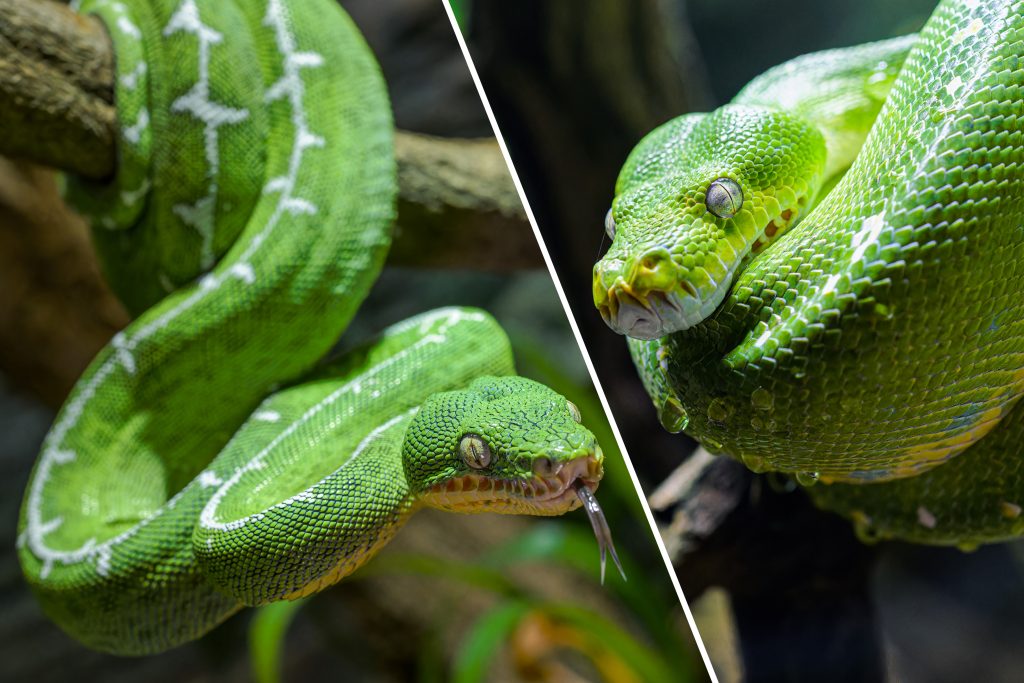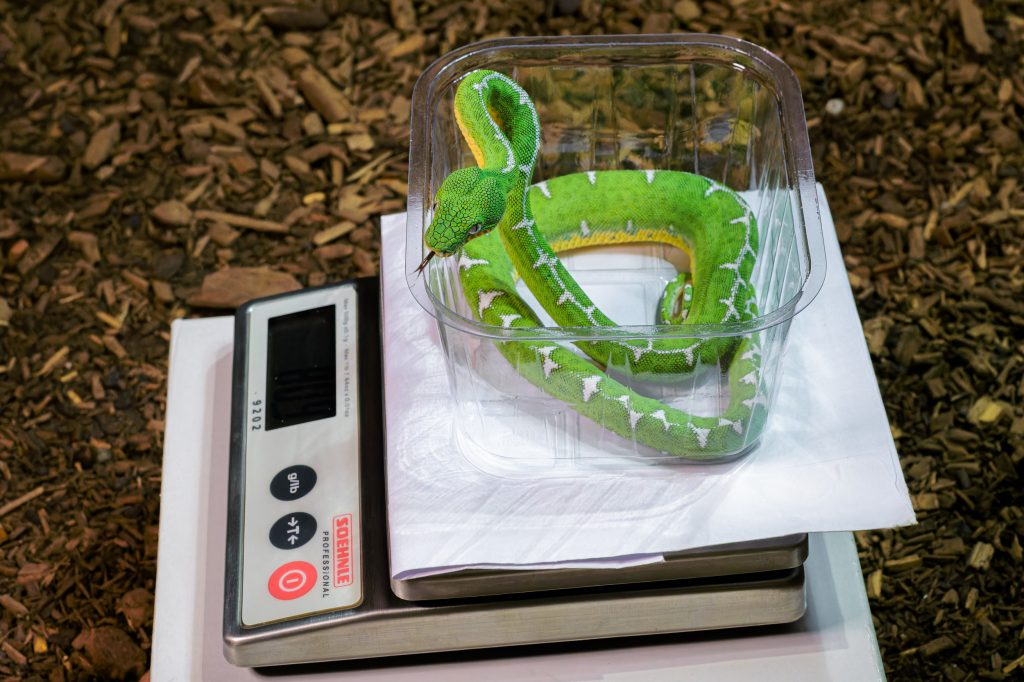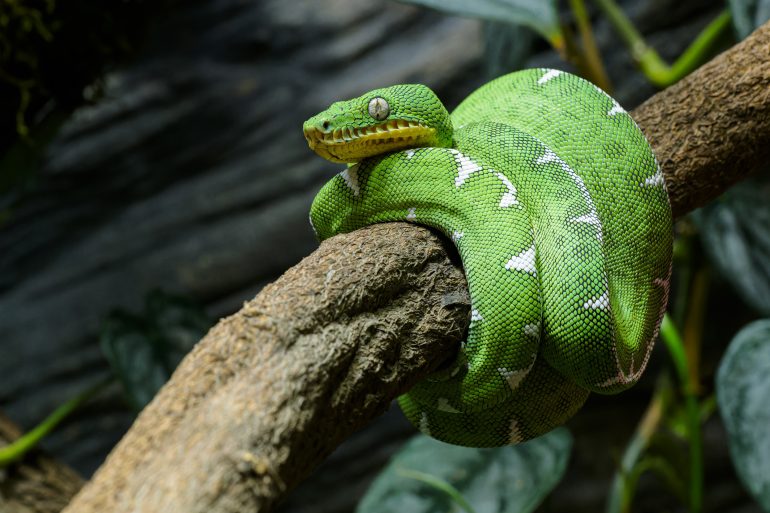The rarely-bred Emerald Tree Boa snake (Corallus caninus) can now be seen at Prague Zoo. These snakes, emerald green on top and lemon yellow on the bottom, inhabit the Terrarium pavilion. A delicate species native to the Amazonian lowlands, it has the proportionally longest teeth of any non-venomous snake. The inhabitant of the neighbouring exhibit is an unrelated but similarly-coloured green python that comes from the opposite end of the world, meaning zoo visitors can now see the phenomenon of convergent evolution with their own eyes.
“The male is called Uatuma and the female is called Coari. It is a young couple, whose acquisition from an experienced herpetologist is extremely valuable for us,” says reptile breeder Vojtěch Víta. “We planted the terrarium exclusively with such types of plants that are also found in the natural habitats of these canids in the Amazon Forest. It is an arboreal species of snake, so visitors will definitely find our pair in the branches at the top of the exhibit.”

The boa’s common name in Czech translates as “dog-headed snake”, which comes from the famous Swedish naturalist Carl Linnaeus. The creator of traditional botanical and zoological nomenclature first described the species with the name “caninus”, due to the shape of the head and fangs, which resemble those of a dog.
This sub-species of this attractive snake was named “Bates”, in honour of the British biologist Henry W. Bates, who was the first to draw attention to the mimicry of non-poisonous animals that resemble poisonous species in order to deter enemies.

One remarkable phenomenon on display in the Terrarium in the lower part of the zoo is the similarity between the Emerald Boas and the neighbouring Green Python, which are almost indistinguishable, despite the Emerald Boa living in South America and the Green Python in the north of Australia and New Guinea.
“The two species are separated by 70 million years of separate evolution, yet they are similar not only in appearance, but also in their way of life,” explained Víta. “Adaptation to almost the same environment or food caused an almost identical development. We call this phenomenon convergent evolution, and it can be seen to varying degrees in other animals as well: for example, in armadillos and crustaceans or our hedgehogs and Australian sea urchins.”

While the green python is a relatively commonly bred species in zoos and hobby farms, Bates’s Boas are now exhibited by only three other institutions in the entire EU, besides Prague Zoo.





